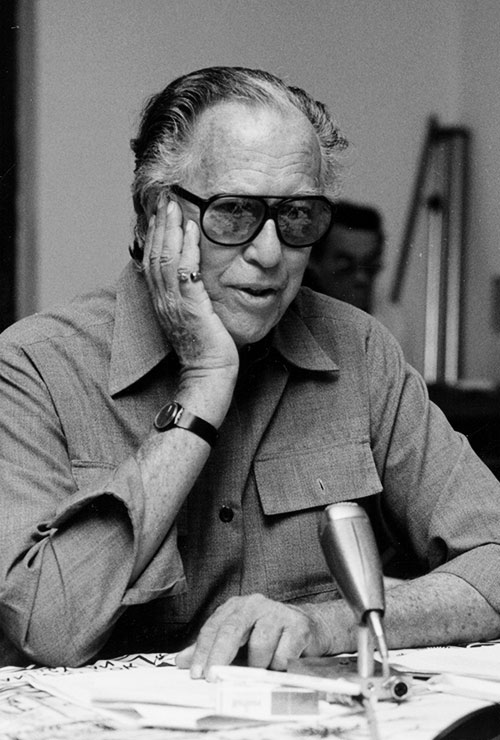Geoffrey Bawa: The Architect
Sri Lanka’s most celebrated architect and the pioneer of the ‘Tropical Modernism’ movement, Bawa’s ability to seamlessly blend traditional Sinhalese design, colonial stylings and modern open plane living has inspired today’s architects and designers ensuring his legacy lives on and continues to evolve.
Richard Fitzherbert-Brockholes commissioned Geoffrey Bawa to create Claughton House in the 1980s and the house was completed in 1985
Biography
Bawa started out studying Law and English at the Royal College, Colombo. In 1938 he moved to the United Kingdom, reading English at Cambridge before becoming a Barrister in London. At the end of World War 2, Geoffrey Bawa returned to Sri Lanka finding work with a Colombo Law Firm. The death of his mother in 1946 prompted two years of travel throughout the Far East, North America and Europe. Ceylon’s Independence saw the return of Bawa with grand plans to turn a derelict rubber estate, the now famous Lunuganga, into an Italian Garden. A lack of technical expertise frustrated Bawa and in 1951 he took an apprenticeship with the architect HH. Reid.
Reid’s sudden death in 1952 prompted Bawa to enrol at the Architectual Association in London as a Student. Graduating with a diploma in architecture and becoming an associate of the royal institute of British Architects, Bawa returned to Colombo in 1958 and became a partner at Edwards, Reid and Begg. Danish architect Ulrik Plesner arrived at the practice in 1959 and introduced Bawa to the simplicity and attention to detail of Scandinavian Design. At the same time he formed a collective of architects, artists and designers to develop a new and fundamentally Sri Lankan style of Architecture. Plesner left the practice in 1967 and Bawa formed a partnership that would last 20 years with an engineer by the name of K Poologasundran.
Geoffrey Bawa’s prolific body of work reflects the fine balance of honouring Sri Lanka’s history and its desire to develop, present in the people of the country. His iconic buildings have driven the style and design of today’s architects and in the new villas of Sri Lanka you will notice styles and elements that wouldn’t exist today if wasn’t for Geoffrey Bawa. For more information please visit the Geoffey Bawa Trust.
